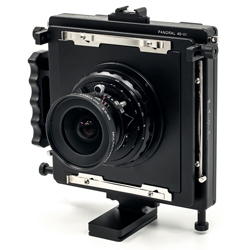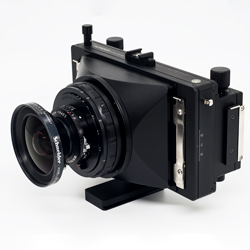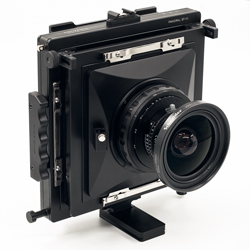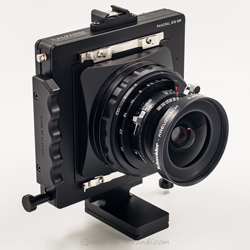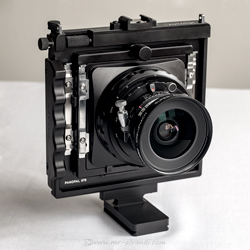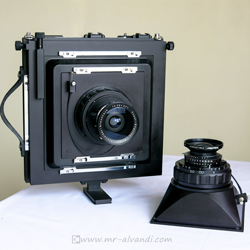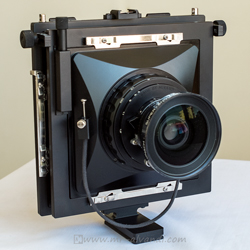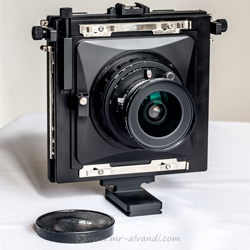ALVANDI Shutter Speed Tester
Introduction
There are several ways to achieve the efficiency of a shutter. Some of these methods are based on the photographer's personal experience. Although it may be fruitful in some cases, it is not scientifically and technically reliable. When we need the accuracy of a measurement, Human error must be prevented. On the other hand, the repeatability of the measurement is of particular importance. The importance of this case was a reason to design a Shutter Speed Tester.
Due to the extensive shutter repair services, I decided to design a shutter test device. Because I can measure the shutter speed, after repairing and overhauling all kinds of central shutters.
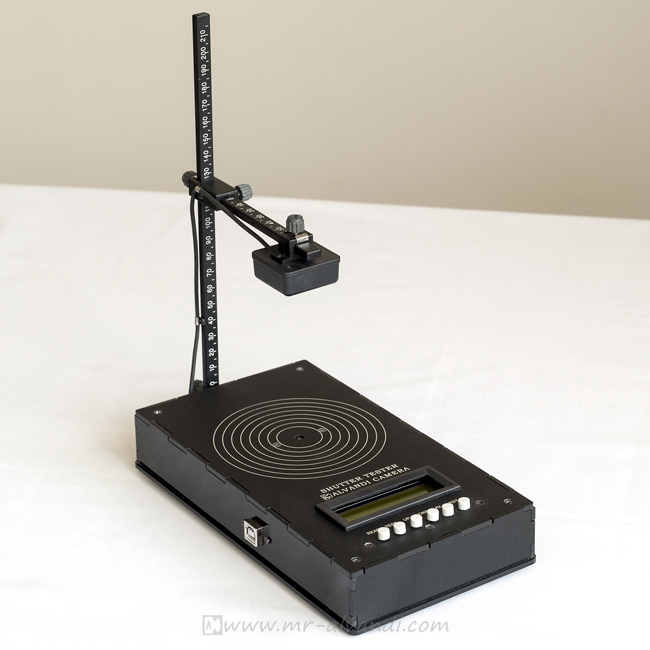
But before introducing the device, I want to explain about the performance of today's conventional shutter types.
Types of Shutters
There are two basic types of shutters in use today, the between-the-lens shutter and the curtain or focal-plane shutter. As the name implies, the between-the-lens shutter is located in an air space between the lens elements.
The focal-plane shutter is directly in front of the sensitive material. A slit in an opaque curtain running between two rollers, admits light as it passes over the sensitive material to make the exposure.
But in between-the-lens shutters, the light is admitted by the opening and closing of blades made of thin material shaped and arranged to open from and close toward the center. For this reason, between-the-lens shutters are sometimes called central shutters.
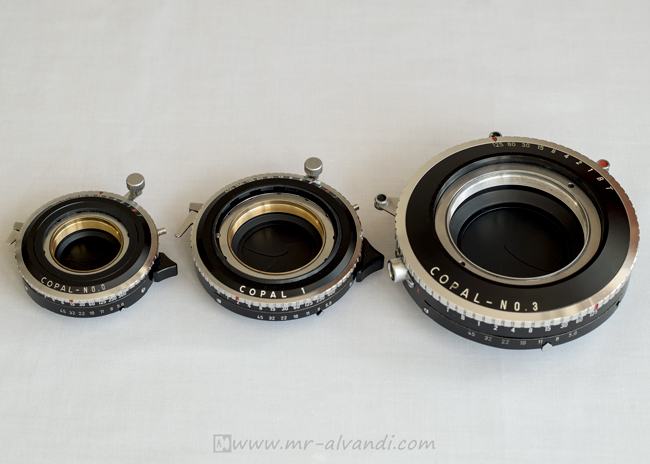
Graphical representation of shutter operation
Figure. 1 represents a graphic interpretation of a complete shutter-operating cycle at maximum speed. It is assumed that the opening time is 2.25 milliseconds, and the closing time is 2.25 milliseconds, and (step 2) the blades stay open for only 1/2 millisecond. The shutter blades begin to open (0), shutter in semi-open step (1), shutter in the fully open step (2), shutter in semi-close step (3), shutter is close step (4).
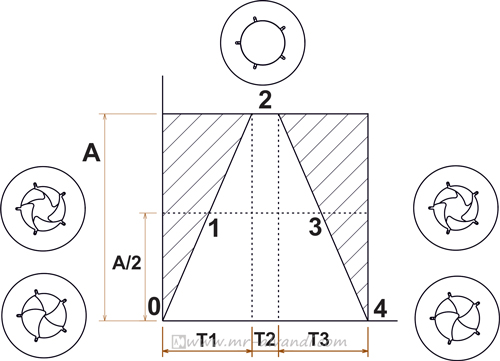
Shutter Speeds and Exposure Time
The concept of shutter speed is not as simple as it seems and requires exact definition. Consider a complete shutter operation cycle as graphically represented in Figure. 2.
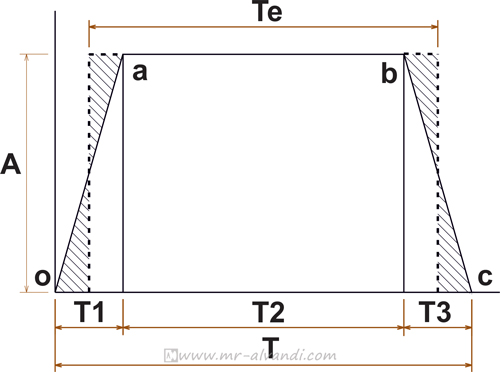
In this graph the opening of the shutter is plotted in relation to time. At start of the shutter operation, i.e., at the instant of shutter release (time t=0), the shutter blades begin to open.
Time T1 is required by the shutter to open fully aperture A (point a). The shutter blades stay wide open for a time, T2 (from a to b), after which the shutter begins to close again.
After elapse of closing time T3 the entire cycle is completed, having consumed the "Total Open Time T".
Assume that Total Open Time T is 1/100th of a second. Obviously, the actual amount of light admitted is not all the light which could pass was aperture A fully open during the entire cycle (Total Open Time), because a considerable part of it has been consumed by the opening and closing period, during which only a part of full aperture A admitted light. As can be seen from Figure. 2, the shutter was wide open only during time T2.
Efficiency of Between-the-Lens Shutters.
The actual exposure time, therefore, will be the time which would permit an equivalent amount of light to pass through an ideal shutter, i.e., one in which the full aperture is open during the entire operation cycle.
The area within the lines o-a-b-c in Figure.2 represents a measure of the actual amount of light admitted during the entire shutter-operating cycle. In terms of geometric relationship, this area is trapezoidal. Therefore, the actual amount of light admitted during the entire shutter-operating cycle is calculated from the following formula:
| Te | = | ( | T1 + T3 | - | T | ) | |
| 2 |
Te, represents the effective exposure time.
The Total Open Time T would be equal to the actual or effective exposure time Te, if a shutter existed which could open and close so rapidly that the two periods T1 and T3 would become infinitely small.
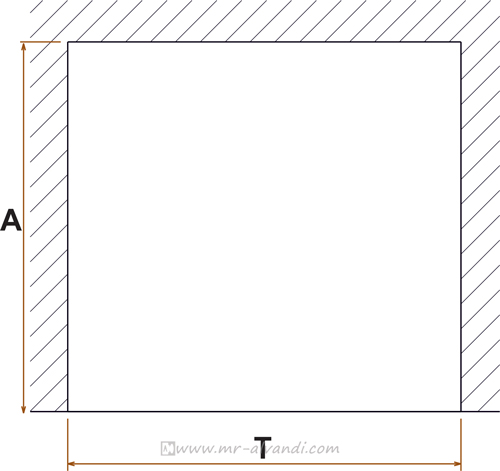
Figure. 3 is an operating diagram of such an ideal shutter of 100% efficiency. But this, of course, is practically impossible, therefore, the efficiency of a shutter at full aperture is always below 100%.
In a correctly designed shutter, the opening and closing times remain constant for any speed, since only time T2, during which the shutter blades stay wide open, is prolonged for longer exposures.
It should be noted that at low speeds, the ratio of T1 and T3 to T2 is very small or negligible. But at high speeds, T2 is almost too small, and in fact, the sum of T1 and T2 determines the shutter speed.
Please compare the following two charts that graphically shows the shutter speed is high and low.
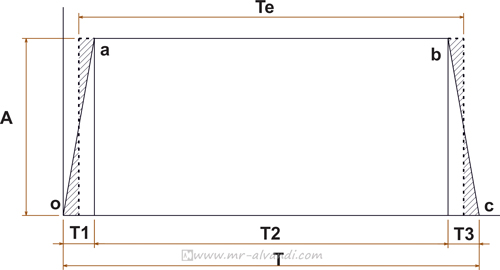
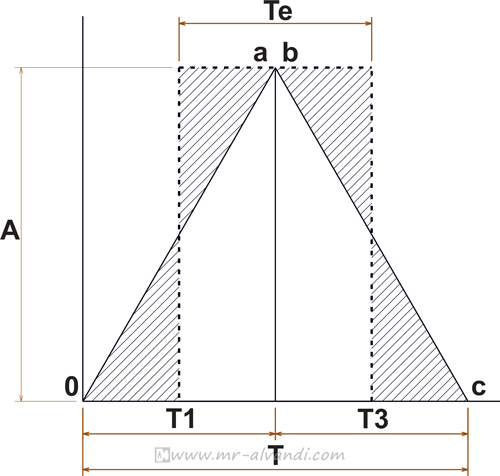
Focal-Plane Shutters
The focal-plane shutter has provided one answer to the need for extremely high shutter speeds up to 1/1000 of a second and higher.
Focal-plane shutters operate according to an entirely different mechanical principle. Instead of moving blades between the lens elements, a curtain is positioned near the focal plane. The curtain is opaque and highly flexible and is tensioned between two rollers.
A slit in the curtain across the line of movement admits light to the film, and various adjustable spring tensions pull the curtain across the focal plane at different speeds. Slits of different width in combination with different spring tensions result in a great variety of speeds.
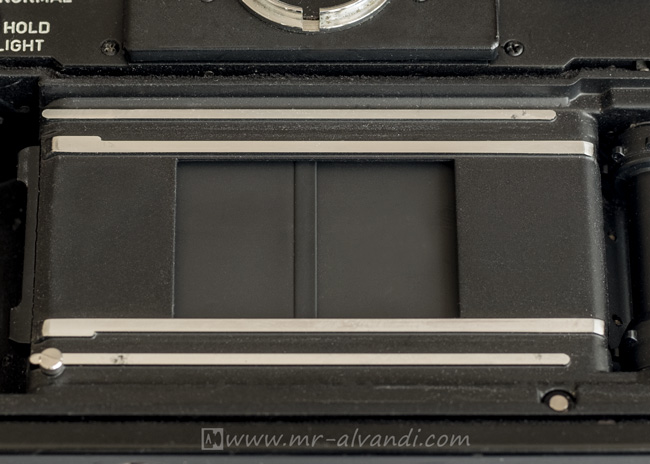
Comparison of Central and Focal-Plane shutters
In comparing Focal-plane and Central shutters it must be realized that one type performs tasks which cannot be fulfilled by the other.
Advantages of the Central shutter
– Simple handling.
– Relatively small size, providing convenience in small folding cameras.
– Freedom from distortion on moving objects because of simultaneous exposure of the entire picture.
– Even density over the entire negative because of simultaneous exposure.
– Correct synchronization is more readily achievable with short and high-peak flash lamps.
Advantages of the Focal-Plane shutters
– Higher speeds to "stop" fast motion.
– Ready interchangeability of lenses because of separate shutter and lens mount.
Shutter speed measurement methods
There are three methods of measuring shutter speed:
1– Actual light admitted (Measurement of Actual Exposure Time)
2–Total Open Time
3– Methods recording the complete cycle of shutter operation through its three periods
Complete measurements of shutter speeds must show the three important periods of the entire shutter operation cycle, the opening, the wide open, and the closing, periods.
Because of their very nature, methods measuring actual amount of light admitted are the simplest. Many of them can be performed by any amateur of even little mechanical ability.
Measurement of Actual Exposure Time
A simple, and for all practical purposes sufficiently exact, method is the measurement of actual exposure time by the result as it appears on the exposed film. It is based on the assumption (not absolutely correct scientifically) that, for example, 200 exposures at 1/200 of a second and one single exposure at one second will produce the same negative density.
The practical tester will, for example, compare 20 times 1/200 with 10 times 1/100, or with 5 times 1/50, or with 1/10 (or 5 times 1/25 with two times 1/10, or with one 1/5).
If the recorded density on the film is uniform, then speeds may be assumed to be approximately correct.
Other simple methods for testing shutter speeds are based on making a photographic record of a body moving at a known velocity. I do not explain it.
Another means of achieving a predetermined speed is that of using a white mark on the turntable of a phonograph, or a disc driven by a synchronous motor.
Measurement of Total Open Time and Efficiency
Measurement of Total Open Time and Efficiency is possible only with more complicated apparatus. Some of these methods are based on the principle of recording the opening and closing of the shutter on a moving film; others employ electronic methods of time measurement.
To measure Total Open Time, an electronic circuit is employed which measures the time interval from the very beginning of light admission to its very end.
This "Total Open Time" remains the same regardless of diaphragm opening chosen, since the shutter opens from the center and closes toward the center.
Methods recording the complete cycle
In this method, all three steps of opening(T1), shutter time(T2) and closing(T3) are measured separately. You can then check the shutter performance for each step.
Shutter speed Standards and tolerances
The standard range is provided by DIN and ASA for shutter speed. These standards include an acceptable upper and lower limit for each shutter speed.
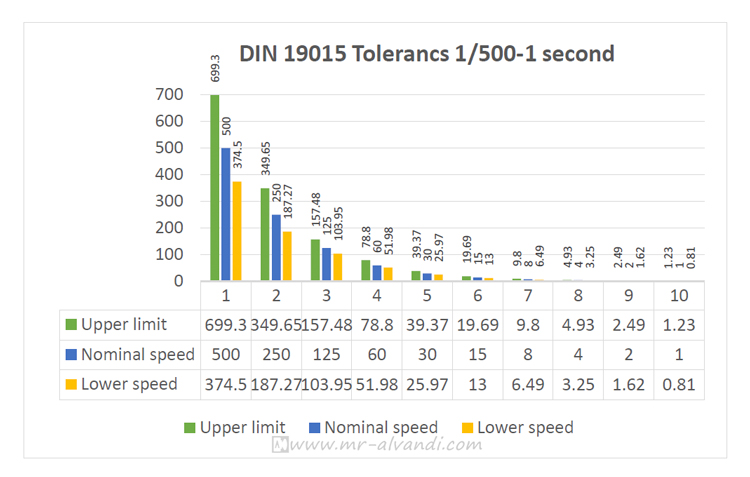
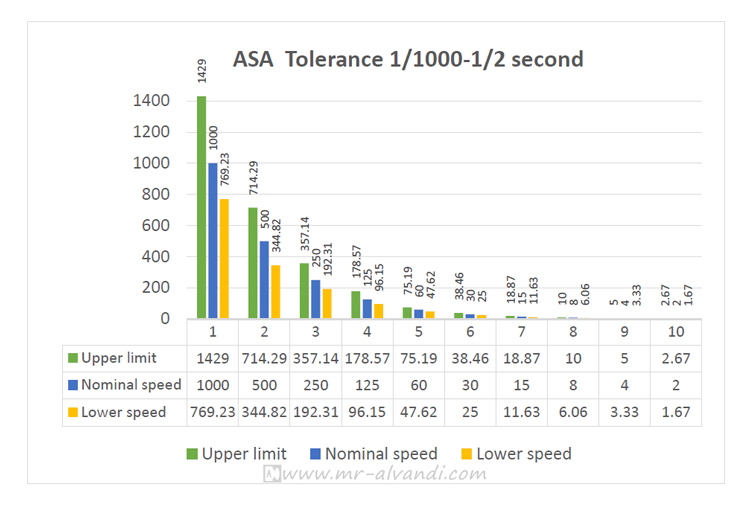
Some manufacturers have also offered a shutter speed tolerance limits for their products, as shown in the tables below. The table below shows the standards of Carl Zeiss.
| Upper limit (s) | Nominal speed (s) | Lower limit (s) | |
| ±0.20 EV | 1.149 | 1 | 0.871 |
| 1/2.30 (0.575) | 1/2 | 1/1.74 (0.425) | |
| 1/4.59 | 1/4 | 1/3.48 | |
| 1/9.17 | 1/8 | 1/6.94 | |
| 1/18.38 | 1/15 | 1/13.90 | |
| 1/36.76 | 1/30 | 1/27.86 | |
| 1/73.52 | 1/60 | 1/55.71 | |
| 1/147.06 | 1/125 | 1/111.48 | |
| ±0.26 EV | 1/306.75 | 1/250 | 1/213.7 |
| 1/613.5 | 1/500 | 1/427.3 |
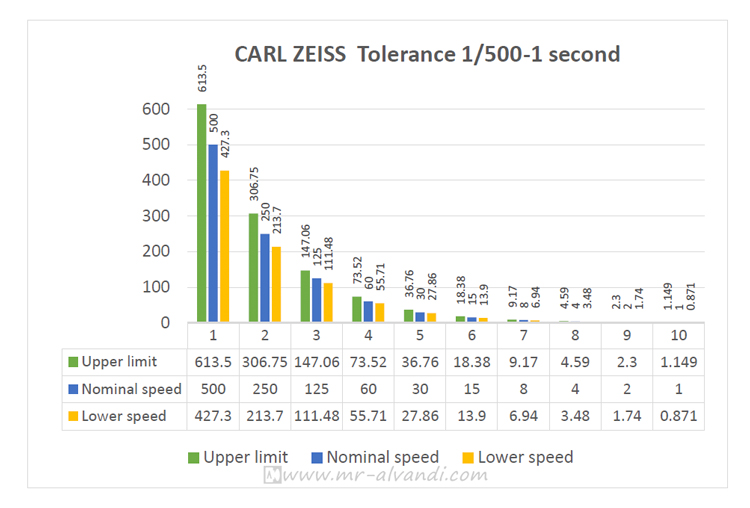
The table below is the standards of Compur shutters.
| Upper limit (s) | Nominal speed (s) | Lower limit (s) | |
| ±15% | 1.15 | 1 | 0.85 |
| 1/2.35 (0.575) | 1/2 | 1/1.74 (0.425) | |
| 1/4.71 | 1/4 | 1/3.48 | |
| 1/9.42 | 1/8 | 1/6.95 | |
| 1/17.64 | 1/15 | 1/13.04 | |
| 1/35.34 | 1/30 | 1/26.11 | |
| 1/70.42 | 1/60 | 1/52.08 | |
| 1/147.06 | 1/125 | 1/108.70 | |
| ±20% | 1/312.50 | 1/250 | 1/208.33 |
| 1/625 | 1/500 | 1/416.66 |
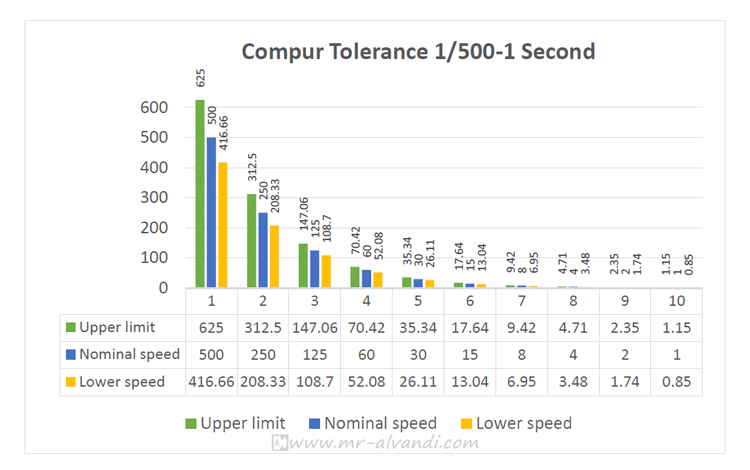
Introducing the Alvandi Shutter Speed Tester
I designed this device according to my field of work, which is generally the repair of Central shutters. But it can also be used for Focal Plane shutters.
The device includes a transmitter sensor and a receiver sensor located on either side of the shutter. The measuring method is based on the amount of light that passes through the shutter or "Total Open Time".
The shutter speed is measured in microseconds and displayed on the screen as a fraction of a second, which is equivalent to conventional shutter speeds. Thanks to 50 memories, you will be able to recheck the tests performed. Also, you can get an average of similar tests. You can see the amount of shutter error by pressing the ST.DV button. The maximum amount of error that can be measured is ±0.5 EV.
Thanks to a microcontroller, I can make many changes to the device's internal program. So there are several buttons for it. Some of which are currently unusable. But by changing the internal program, they will be activated.
The device has a vertical column with grading, which can change the height of the sensor. It also has a horizontal axis, which is used to align the receiver and transmitter sensors.
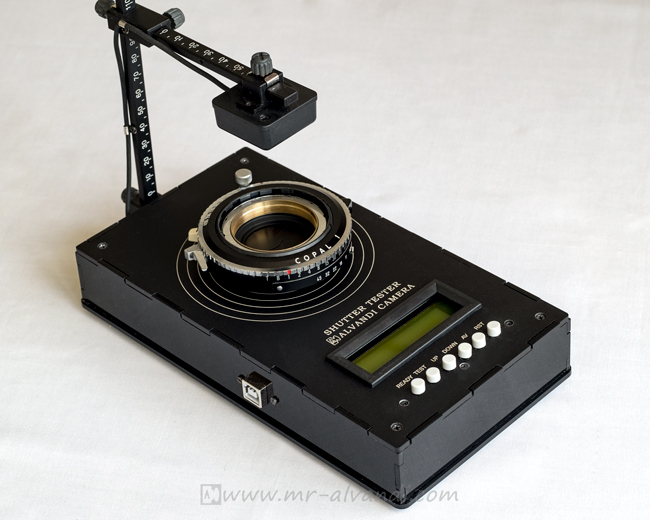
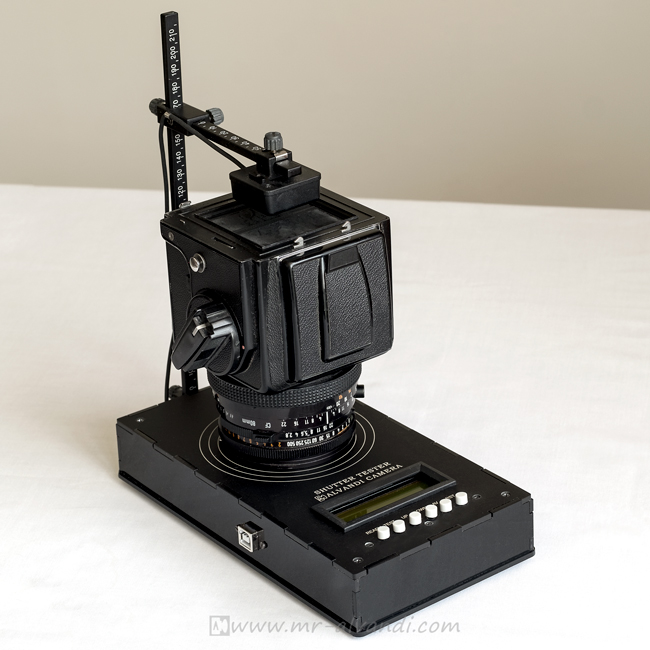
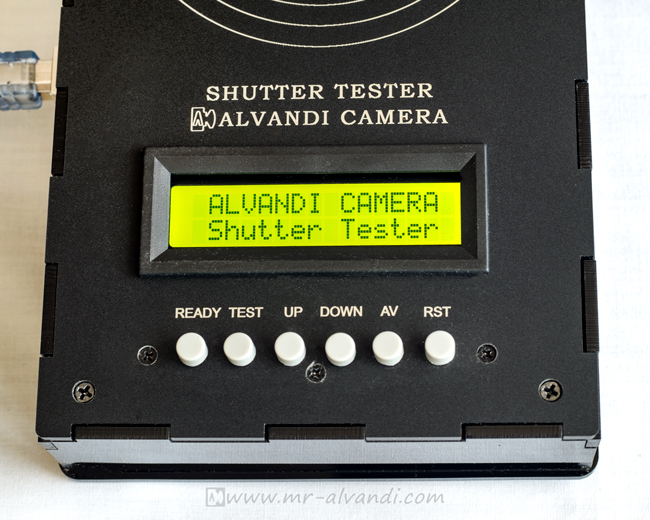
Measurement range
To determine the measurable speed range of the shutter speed by the device, I used various electromechanical and mechanical cameras and shutters.
Electromechanical shutters have less error than mechanical shutters due to their nature and the adjustment of the shutter operation time by the electronic circuit. So I used them as a reference for calibrating the device.
Of course, I'm aware that electromechanical shutters also have errors. However, due to the fact that the error tolerance, according to the standards, is ±20% at high speeds, so it is possible to ignore the device error with confidence.
On the other hand, since the most practical speed for Central shutters is in the range of 1/2 to 1/60 seconds, so I won't have to worry too much about the accuracy of the device at high speeds.
I measured the speed range from 180 seconds to 1/2000 seconds repeatedly for electromechanical shutter. This range is very suitable for measuring most Central and Focal Plane shutters.
As I said, many tests were performed and recorded for each Central and Focal Plane shutters. Then, the values obtained were recorded in a chart, so that I could compare the percentage of shutter and device error against the standard tolerance values.
The chart below is the measured values for the Nikon FE2 camera. The camera has an Copal vertical electromechanical Focal Plane shutter from 8 to 1/4000 seconds. You can see the sum of the shutter and device error values in the chart.
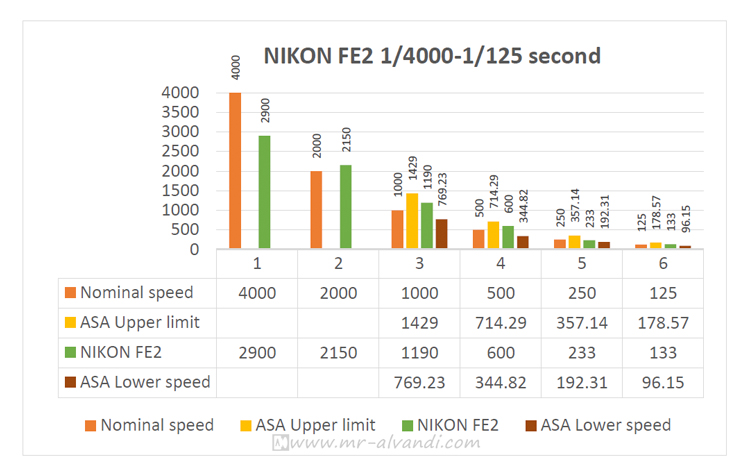
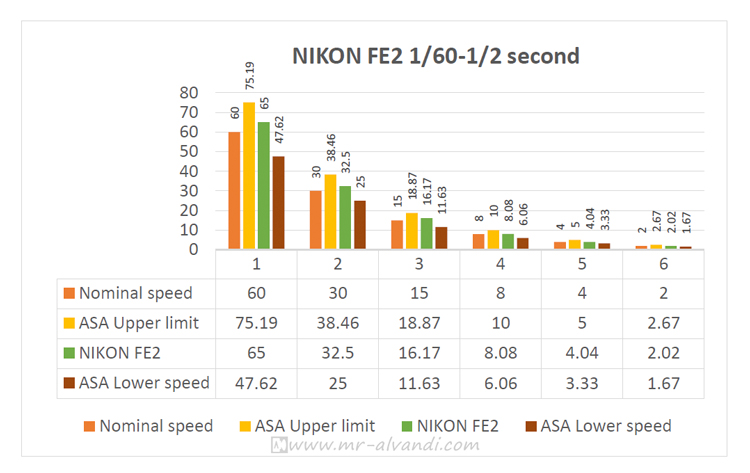
If we compare the obtained values with the standard ASA values, the shutter speeds are still acceptable with the exception of 1/4000 seconds. It should be noted that the measurement error is very high at a speed of 1/4000 seconds and is practically outside the accuracy range of the device.
The chart below is the measured values for the Canon New F1 camera. The camera has an horizontal electromechanical focal plane shutter from 8 to 1/2000 seconds.
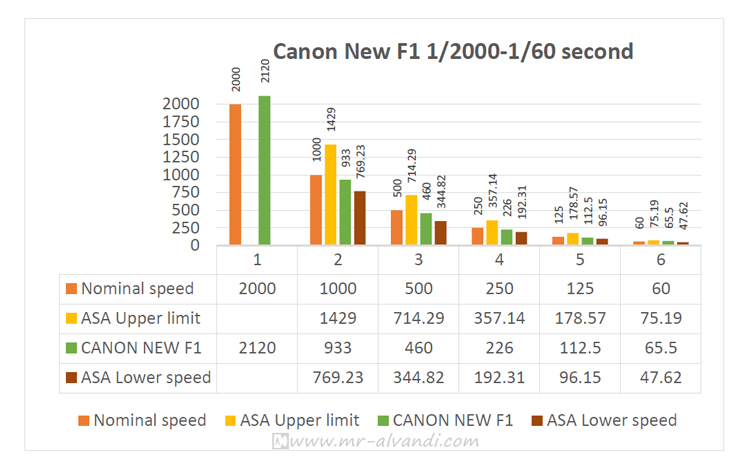
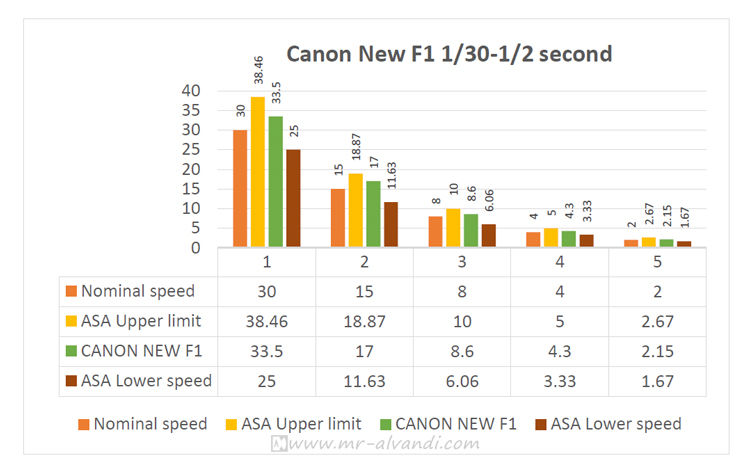
The chart below is the measured values for the Copal 0 shutter. This shutter has a mechanical speed range from 1 to 1/500 seconds.
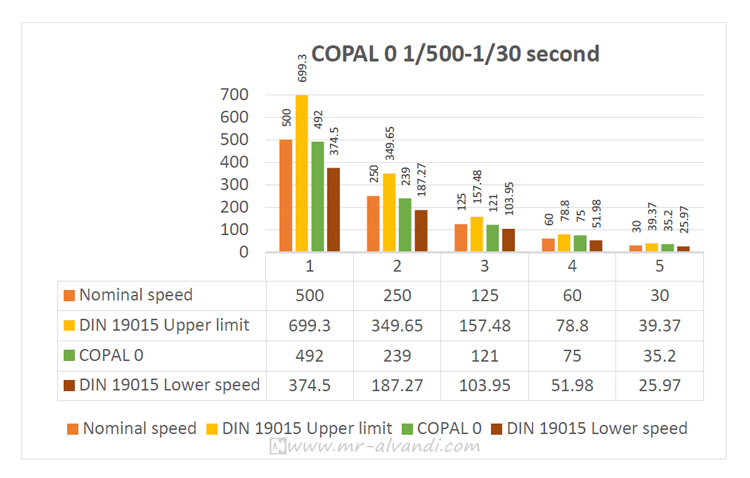
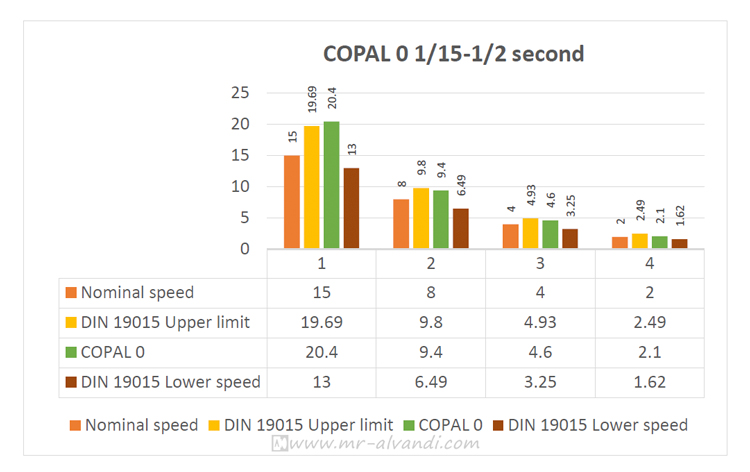
Technical Specifications
– Shutter Speed tester method: based on Total Open Time measurement system
– Measurable range: from 180 to 1/2000 seconds
– Ability to measure shutter type: Vertical and Horizontal Focal Plane, Central
– Ability to change the program in the internal microcontroller
– Up to 50 tests memory for a recheck
– Ability to increase memory
– The Average button for similar functionality tests
–The ST.DEV button to determine the error
– Simultaneous display of micro-seconds and shutter speed according to the standard method
– Sensor: Infrared
– Power: 9 volts
– Display: LCD
– Measurement accuracy: 10 microseconds
– Dimensions: W:120, D:236 and H:252mm
– Weight: 465gr without power unit
Reference:
Photography Its Materials and Processes by C.B. Neblette

